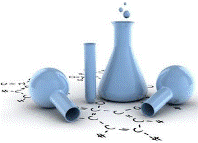Chemical and Biomolecular Engineering, Department of

Department of Chemical and Biomolecular Engineering: Faculty Publications
Date of this Version
6-22-2022
Document Type
Article
Citation
Metabolic and Expression Model of R. palustris. Microbiology Spectrum. July/August 2022 Volume 10 Issue 4. 10.1128/spectrum.01463-22
Abstract
Rhodopseudomonas palustris CGA009 is a Gram-negative purple nonsulfur bacterium that grows phototrophically by fixing carbon dioxide and nitrogen or chemotrophically by fixing or catabolizing a wide array of substrates, including lignin breakdown products for its carbon and fixing nitrogen for its nitrogen requirements. It can grow aerobically or anaerobically and can use light, inorganic, and organic compounds for energy production. Due to its ability to convert different carbon sources into useful products during anaerobic growth, this study reconstructed a metabolic and expression (ME) model of R. palustris to investigate its anaerobic-photoheterotrophic growth. Unlike metabolic (M) models, ME models include transcription and translation reactions along with macromolecules synthesis and couple these reactions with growth rate. This unique feature of the ME model led to nonlinear growth curve predictions, which matched closely with experimental growth rate data. At the theoretical maximum growth rate, the ME model suggested a diminishing rate of carbon fixation and predicted malate dehydrogenase and glycerol-3 phosphate dehydrogenase as alternate electron sinks. Moreover, the ME model also identified ferredoxin as a key regulator in distributing electrons between major redox balancing pathways. Because ME models include the turnover rate for each metabolic reaction, it was used to successfully capture experimentally observed temperature regulation of different nitrogenases. Overall, these unique features of the ME model demonstrated the influence of nitrogenases and rubiscos on R. palustris growth and predicted a key regulator in distributing electrons between major redox balancing pathways, thus establishing a platform for in silico investigation of R. palustris metabolism from a multiomics perspective.


Comments
© 2022 Chowdhury et al. This is an open-access article distributed under the terms of the Creative Commons Attribution 4.0 International license.